Dance Dance Revolution: The Insurrectionary Politics of Shaking It
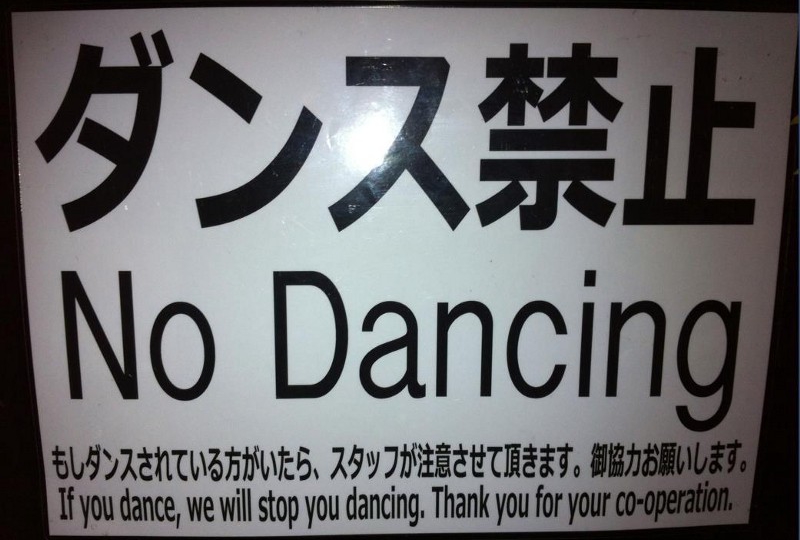
The following text by Leo Zhao was performed as a lecture during Commonplace in Berlin on July 20, 2018
“If I Can’t Dance, I Don’t Want to Be Part of Your Revolution”
–Attributed to Emma Goldman“Music is a weapon, a real weapon, in a concrete sense.”
–Desmond Tutu (1)“Dancing is the remedy of resistance, the art of the marginalized and dispossessed.”
–Marc de la Maison (2)
In the summer of 2014, a ten-block area in the middle of Kreuzberg in Berlin was cordoned off around a school in which some refugees had barricaded themselves in defiance of deportation orders. Next to the school, in the middle of an intersection, a mobile sound system was set up, around which hundreds of people sat in the streets in solidarity with refugees. Around them were about eight or nine police vans, with dozens of police standing around, watchful.
Before me was a one-man/woman electro-punk band, who screamed into the mic above pummeling beats and abrasive slabs of synth noise at a high volume. People listened, and the police stood around with arms crossed, doing nothing. Afterwards, I began my set, at a lower volume, with groovy African music. Smiles immediately appeared all around, as people stood up and began to dance. Chaos erupted suddenly only three minutes later, as a dozen police rushed the sound system, yelling aggressively to shut off the music. I switched off the sound and threw my arms around my equipment, because it looked like they were about to smash everything. Protestors tried to stop them, a few fights broke out, and some were arrested, as I packed up and got the hell out of there.
This experience made one thing very clear to me: the most dangerous thing in the eyes of the police was dancing. But why?
Prohibition, Cooptation, Restriction
In 186 BCE 7,000 members of the cult of Dionysus were imprisoned, tortured, and executed in Rome for challenging “Roman values” with group sex, psychoactive substances, and dancing. (3) The Bacchic Mysteries were infamous for the blurring of boundaries between genders and classes, promoting dangerous ideas such as rights for women, children, foreigners, and the poor, and giving slaves a taste of what freedom feels like. Justification for the crackdown was the claim of criminal activities during the all-night, all-day ecstatic orgiastic rites. But even such large-scale suppression failed to eradicate the movement, and Rome eventually gave the cult official status, making it a state-sanctioned religion, in order to curtail its vitality, better monitor its activities, and reduce its influence on the population.
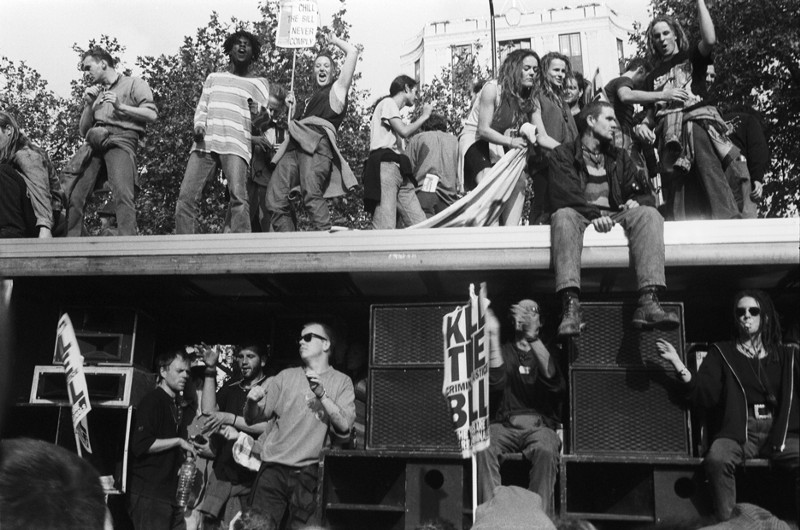
This should sound familiar to us, because it is no different from the passing of many versions of Anti-Rave legislation during recent decades in the U.K., U.S., and elsewhere, based on allegations of criminal activities during the events (usually involving psychoactive substances). Under these new laws, voluntary dance gatherings outside of the structures of consumerism were strictly forbidden, and police in the U.K. had the power to remove people from events featuring music “characterised by the emission of a succession of repetitive beats” (4). As a result, dancing together is often today largely only allowed within the confines of commercialized and licensed club spaces, restrained by codes of conduct, and limited within the span of a few hours per night. Another example of the prohibition of social dancing was the cabaret licenserequired of bars and clubs in NYC in the 1990s for the permission of “moving in time to music” (5) on the premises: on multiple occasions I have seen police storm venues and shut down concerts under this pretext. (correction: I’ve just been alerted to the fact that this cabaret license law is still very much in effect in NYC as of 2017)
Also exactly the same as the way Rome eventually dealt with the Dionysian cult is the way dance cultures are today coopted by the established consumerist order, only allowed to exist on its terms, in authorized spaces, and between restricted hours. People are permitted to have a little bit of controlled, subdued, and commodified fun, but not too much, because the collective experience of exaltation and joy must not lead dancers to question the validity of regimented routines of normal life, and must not disrupt the work-consume-sleep cycle.
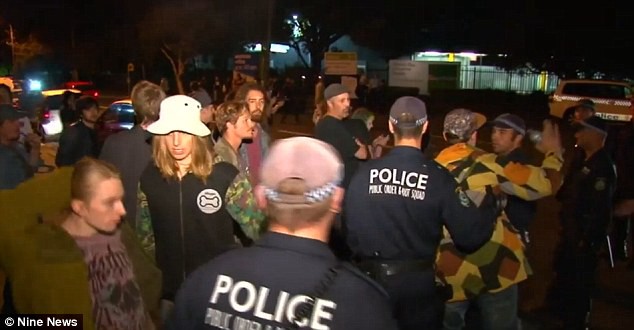
The Dionysian cult and other similar mystery religions of the last few centuries B.C. were already forming a revival movement that sought to bring back indigenous Eurasian and European practices, pre-Abrahamic animist spiritual systems — ancient methods of worship, rituals, and modes of being which by then were nearing extinction at the hands of successions of conquering armies. After going underground again since the fall of Rome, secret Bacchanals went on in the forests of Europe until as late as the 1700s, before being eventually stamped out by government and religious institutions (only to resurface in the West a couple of hundred years later, as twentieth-century counter-cultural movements).
https://www.youtube.com/watch?v=hm3qQyWXoe0
Another surviving example of pre-modern pagan traditions is the May Day fertility festival, in which young men and women dance to celebrate the beginning of summer on the first of May, around the May Pole, a ritual banned by the church for many centuries. It is surely no coincidence that 300,000 workers in Chicago chose this day — due to its associations with folk culture in opposition to authority — to go on strike in 1866, protesting long hours and horrible work conditions, organized by socialist and anarchist unions.
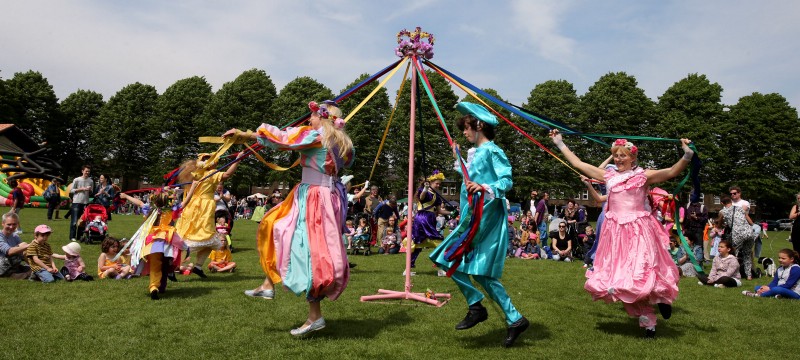
Class, Hierarchy, and the State
The cultural establishment in Europe has always regarded social dancing to belong to the realm of the poor, uneducated, and brutish, essentially an indecent activity fit only for drunken fools. (6) And this is largely true, as the lower classes and marginalized groups always more extensively engage in participatory dancing, preserving remnants of age-old practices. It is not accidental that the Irish, with their rich indigenous cultural history abused and exploited by the processes of modernization and colonialism, are known to be the most ardent dancers in all of Europe. Many other examples exist, such as Polka, a music and dance form almost exclusively belonging to the underclasses of many European societies. And consider the history of dance music cultures such as Flamenco in Spain and Tango in Argentina, which are the literal cries of defiance from gypsies, the poor, people hated and abused by bourgeois society, now proudly celebrated by the same bourgeois society as a “national treasure”.
In place of music for voluntary and spontaneous communal participation, the upper-class nobility developed cerebral and passive musical frameworks that are divorced from the body. These forms champion top-down hierarchical roles and structures, enforce a rigid separation between artists and audience, and restrict dance to the narrow sphere of performance and spectacle. The attitudes cultivated by this specialized aristocratic culture undoubtedly persist today: the Wikipedia entry for “dance” first defines it as a performative art form, only mentioning participatory dance later.
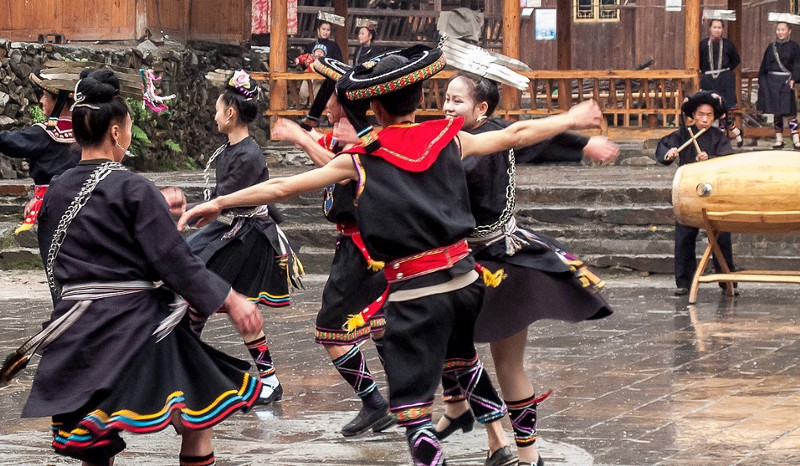
But this general historical process of erasing aboriginal cultures by dominant empires, and the resultant institutionalized repressive attitudes toward social dancing, are not confined to Europe. Without exception, legacies of participatory dancing around the world has always existed in the cultures of the systematically oppressed, under-privileged, and marginalized, since the dawn of civilization. On the flip side, the official music of kingdoms, states, and their elites is typified by grandiose, courtly, self-important, reserved, and restrictively cerebral “classical” forms that dictate docile and passive modes of enjoyment. In China, the thousands of ethnic minorities (such as the Uyghur) have exquisite and flamboyant customs of social dance music, compared to the inert, lethargic, and solemn music of the dominant Han culture. In India, the tribal minorities and religious groups have much more raw, funky, and danceable tunes than those in the highly refined, specialized, and formal Indian Classical canon. In Indonesia, the smaller gamelans that play human scaled music found in the vast periphery of forests and islands promote more joyful, freeform dancing, in contrast to the large-ensemble court gamelans that play stately, majestic, and monumental compositions where dance is pure spectacle.
Indigenous vs. Colonial
Compared to other places, indigenous ways of life survived much better on the African continent, as African cultures were only recently, since roughly 1500s, subjected to the homogenizing and destructive process of colonization. The taking indigenous land, erasure of indigenous cultures, exploitation, enslavement, and mass murder of indigenous people, all unfolded in Europe and Asia a long time centuries and millennia prior. Hierarchical and oppressive states such as the Malian Empire did also exist in Africa, but they somewhat differed from their counterparts in South America, Europe, and Asia, in absorbing the cultures of the groups they conquered, rather than eradicating them completely. These are a few of the main reasons why the culture of rhythm and dance in Africa survives and thrives to a greater extent than elsewhere.
https://www.youtube.com/watch?v=N8ZULUwLd20
Ever since the advent of colonialism, rhythmically focused music from Africa has been regarded by the European establishment as primitive and subhuman, its guttural noises and beats seen as belonging much more to the animal kingdom than polite society. In particular, hip movements were (and still are, as seen in the recent controversies over twerking) a huge taboo among domesticated Western subjects. Unbroken connection with the body and guilt-free expression of sensual energy was (and is) considered “improper” and “lewd” to people conditioned by millennia of body-shame and sexual repression. This is why Africans had to be demonized, humiliated, brutalized, subjugated, “civilized,” and Christianized, because their supreme dignity, and lack of shame and inhibition were greatly intimidating to the prohibitive cultures of Europe.
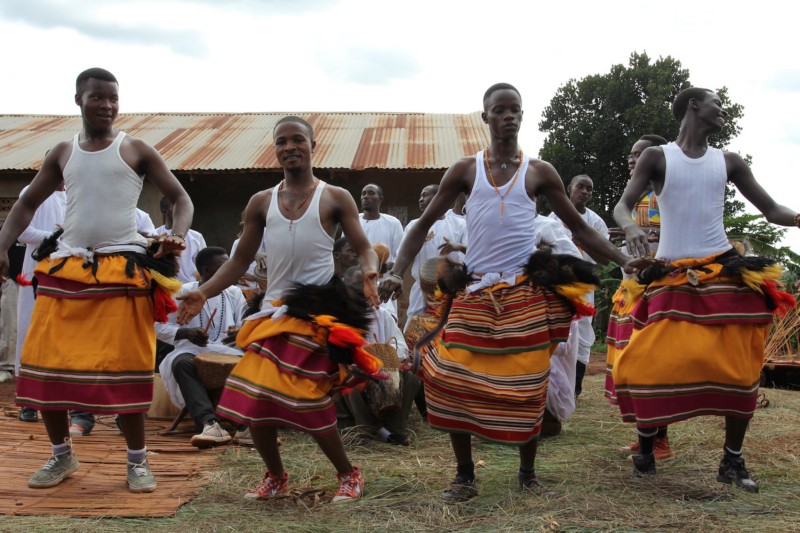
Anyone not convinced of this only needs to compare the dance floor of any contemporary club in Africa with those in Europe, on any given night: The difference is immense. In my experience of the motherland, it is typical for people to walk into a party and immediately start shaking and gyrating to the music joyfully, artfully, with unique creativity and individualized moves. Dancing also almost always takes place together in groups, often forming the proverbial circles in the center of which people take turns showing off their skills, radiating unabashed sexuality, to the enthusiastic cries of approval from others. And at informal gatherings without music, someone would often start playing music on a cell phone, and people might get up to boogie. Meanwhile, in perfectly designed European clubs with the best sound systems, people need to drink alcohol for hours before finally overcoming deeply seated embarrassment and start self-consciously half moving to the beat like stick figures without hip joints — and almost always alone.
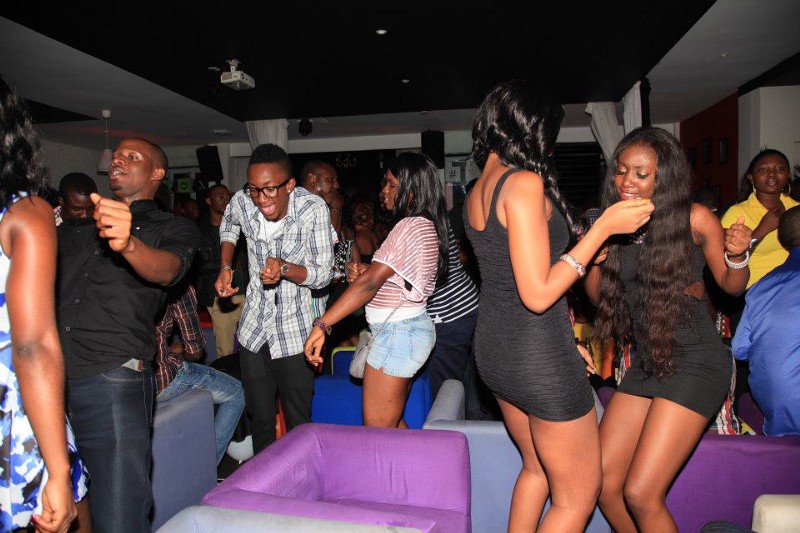
Central Cultural Heritage
Beat-driven music and social dance was central in the evolutionary process of Homo Sapiens, both in terms of biology and sociology. Biologically speaking, bipedalism, or the ability to walk upright, is only possible with cognitive processes such as “beat induction,” the ability to anticipate the next beat as part of a syncopated pattern. Rhythm in Africa and elsewhere is built around this basic principle: the placement of some of the beats in the rhythm off the grid, a little bit before or after when the pattern-recognition part of our brains tells us it should drop, and the resultant tension is what makes us want to move to the music. If dance music is the design of sonic patterns in time according to the proportions — and the joyful, healing movements — of the human body, it is a science that has been perfected in the land of Africa, perhaps more than elsewhere.
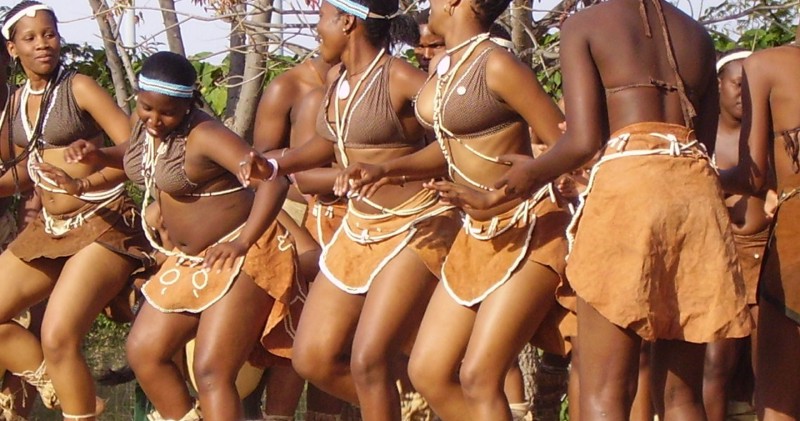
In terms of sociology, drumming, singing, and dancing together (along with ritualized orgiastic practices in conjunction with the imbibing of sacred entheogens) builds group cohesion, develops trust, encourages cooperation, and forges strong bonds between members of society. Participatory dance is a deeply ingrained, centrally important social trait, an essential organizing principle common to human communities around the world prior to the advent of class and hierarchy roughly 12,000 years ago. Because it brings people together voluntarily, and creates ecstatic group consciousness via collective trance states, communal dancing reveals divisions, categories, inequalities, and laws to be arbitrary and meaningless, and is a convivial activity inherently corrosive of top-down authority. As David Hesmondhalgh writes,
[R]ave confirmed the subversive populism of dance. Its dangerous reputation was sealed by a ‘moral panic’ in the national press about the drugs associated with the scene. […] Accompanying this panic, though, was an especially strong Utopian discourse of collectivism and equality within club culture, which stressed the breaking-down of ethnic, class and gender differences. Dance events had long been viewed as rituals of togetherness and inclusion, but the new dance culture went further, and the rhetoric at least was genuinely democratizing: ‘No performers, no VIPs, we are all special,’ was one typical slogan from a club flyer. (7)
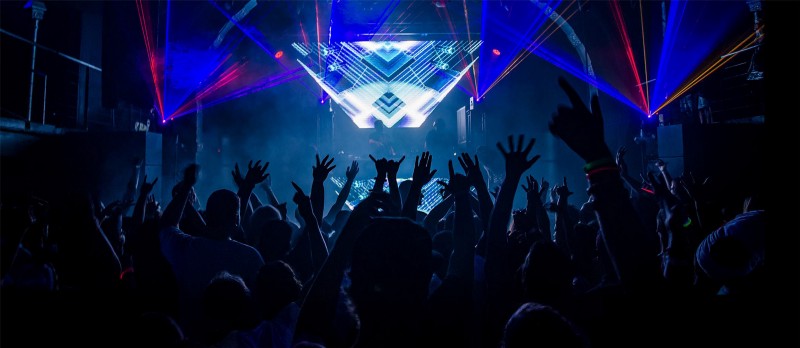
The popular notion today that dance music and its “unreflective hedonism” is apathetic and apolitical needs to be reversed: social dance itself is inherently anarchic, democratic, and revolutionary. Dancing re-connects us to both our own and other bodies, reopens dammed up libidinal flow, dissolves ego-identification, and temporarily restores a sense of group unity. An embrace of communal, orgiastic sexuality on the dance floor, even if only symbolically, is itself a radical gesture caustic to authority and its enforced repression and alienation. It is no accident that House music came from the queer black spaces that marginalized people had carved out for themselves, and Techno was “a reaction to inner-city decay, as by-product of African-American struggle, as a form of protest.” (8)
We may have much work to do concerning the utilization of the emancipatory power of dance in specific revolutionary praxis, but around the world it is, and has always been, a central part of liberation struggles. Despite the effects of commercialization, and even within the co-opted space of the most commerical dance clubs, consumerist codes can break down and borders can dissolve. As dancers experience ecstatic and extraordinary states of mind which are anathema to routine alienated consumption, they realize, if only semi-consciously, and for brief moments, that the truly rewarding things in life are not money, shopping, or status. Perhaps in some ways, the 12,000-year-old oppressive walls of hierarchical civilization can be dismantled, and the structural cancer that is capitalism can be cured, simply by joyful hip-shaking.
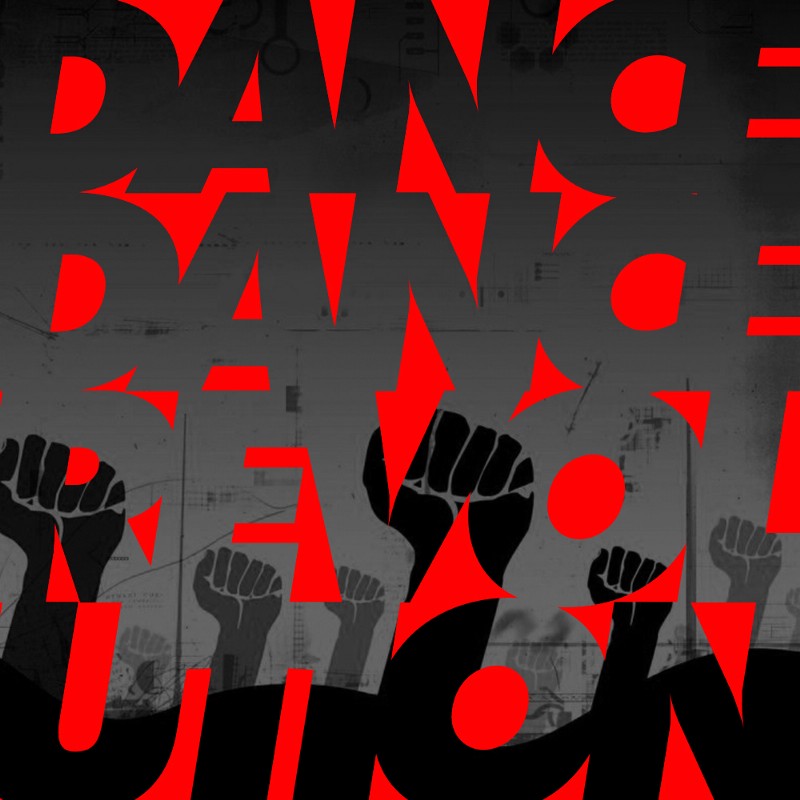
https://www.mixcloud.com/djzhao/dance-dance-revolution/
All social dance music is inherently insurrectionary, but here is an Anarcho Communist Party Mix, 3 hours of leftist revolutionary music from all over the globe, spanning many decades and a wide variety of genres. From African Independence era classics to Detroit rebel Techno, from communist Reggae to Riot Bass, from Rojava Debkah to EZLN grooves, from Afrobeat to Leftist Hip Hop, from Digital Hardcore to the Internationale… for allies and comrades everywhere in our collective struggle towards freedom.
By Leo Zhao
This article was first published on This is Africa. Republished here with permission of the author.
NOTES
1. Desmond Tutu, Power of Freedom Songs (Making Music, 2002).
2. Marc de la Maison, Facebook comment (Facebook, 2016).
3. Daniele Bolelli, The Slave Wars (History On Fire, 2015).
4. Criminal Justice and Public Order Act, (HMSO Publications, 1994).
5. NYC Cabaret License, (NYC Department of Consumer Affairs, 1997)
6. Piero Scaruffi, A History of Popular Music before Rock Music (Omniware, 2007).
7. David Hesmondhalgh, “The Cultural Politics of Dance Music,” (Soundings 5, 1997).
8. Robert Hood, Electronic Warfare: The Political Legacy of Detroit Techno (Pitchfork, 2015)
Thanks to Nadine Siegert and all at Iwalewa Haus, University of Bayreuth for commissioning the lecture and dj set which became this piece and this recording.
